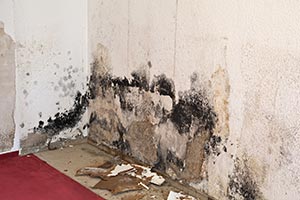The Residential Common Frequent Causes of Water Leaks: Detailed Examination
The Residential Common Frequent Causes of Water Leaks: Detailed Examination
Blog Article
We've unearthed this article relating to How to Find Water Leaks below on the web and decided it made sense to discuss it with you on this site.

Leakages not just create waste of water yet can also cause unneeded damages to your residence and promote unwanted natural growth. Water leakages might go undetected because many of the pipework in our house is concealed. By looking as well as recognizing for daily scenarios that cause leaks, you can shield your home from future leaks as well as unneeded damages. Today, we will take a look at six leak triggers that may be creating your pipes to trickle.
Immediate temperature level changes.
Severe temperature level modifications in our pipes can trigger them to expand as well as acquire suddenly. This growth as well as tightening might create fractures in the pipelines, particularly if the temperature level are listed below cold.
Corroded water supply
As time passes by, your plumbing system ages and corrosion such as rust might begin gnawing the pipelines. This might be the source of discoloration or warping on your water pipes. This requires an inspection with your plumber quickly. If our plumbing system is old, take into consideration changing the pipelines given that they are at a higher threat of rust than the more recent models.
Faulty Pipeline Joints
The factor at which your pipelines connect is regularly the weakest web link in the waterline. Pipeline joints can degrade with time, leading to water leaks. The majority of pipeline joints are not easily visible. If you have noisy pipes that make ticking or banging sounds, especially when the hot water is switched on, your pipeline joints are probably under a lot of pressure. It is recommended to have your plumber examine your system annually.
Encroaching roots
The majority of water leakages start outside the house instead than inside it. You could see damp spots or sinkholes in your backyard, and also that could indicate that tree roots are getting into water lines triggering water to seep out.
Poor Water Connectors
Sometimes, a leak can be caused by loose hoses as well as pipelines that provide your appliances. More often than not, shifting is what triggers the loosened water Connections. You could discover in the case of a washing equipment, a hose may spring a leak because of trembling throughout the spin cycle. In case of a water connections leak, you may observe water running directly from the supply line or puddles around your appliances.
Clogged Drains
Blocked drains pipes might be irritating and inconveniencing, but they can in some cases end up creating an overflow leading to break pipes. Maintain removing any type of materials that may go down your drains pipes that can obstruct them to avoid such troubles.
All the above are root causes of leakages but not all water leaks arise from plumbing leakages; some leaks might originate from roof leakages. All leakages need to be fixed instantly to prevent water damages.
Leaks not only trigger waste of water yet can likewise cause unneeded damages to your house and also advertise unwanted organic growth. By looking and also understanding for daily situations that trigger leakages, you can secure your residence from future leaks and unnecessary damage. Today, we will look at six leakage creates that might be triggering your pipelines to drip.
At times, a leakage can be created by loose tubes and pipelines that provide your home appliances. In situation of a water connections leak, you may notice water running straight from the supply line or pools around your devices.
How To Check For Water Leak In Your Home
How To Check for Leaks
The average household's leaks can account for nearly 10,000 gallons of water wasted every year and ten percent of homes have leaks that waste 90 gallons or more per day. Common types of leaks found in the home are worn toilet flappers, dripping faucets, and other leaking valves. These types of leaks are often easy to fix, requiring only a few tools and hardware that can pay for themselves in water savings. Fixing easily corrected household water leaks can save homeowners about 10 percent on their water bills.
To check for leaks in your home, you first need to determine whether you're wasting water and then identify the source of the leak. Here are some tips for finding leaks:
Take a look at your water usage during a colder month, such as January or February. If a family of four exceeds 12,000 gallons per month, there are serious leaks.
Check your water meter before and after a two-hour period when no water is being used. If the meter changes at all, you probably have a leak.
Identify toilet leaks by placing a drop of food coloring in the toilet tank. If any color shows up in the bowl after 10 minutes, you have a leak. (Be sure to flush immediately after the experiment to avoid staining the tank.)
Examine faucet gaskets and pipe fittings for any water on the outside of the pipe to check for surface leaks.
Undetected water leaks can happen without the home or business owner even realizing. If you suspect a water leak, but not able to find the source. It is time to contact a professional water leak detection service, The Leak Doctor.
How To Find a Water Leak In Your Home
https://www.leakdoctor.com/blog/How-To-Check-For-Water-Leak-In-Your-Home_AE197.html

I'm very curious about Most Common Causes of Leaky Pipes and I am hoping you enjoyed our piece. So long as you appreciated our blog entry kindly be sure to pass it around. I recognize the value of reading our article about Common Water Leaks In House.
Quality assurance? Connect. Report this page